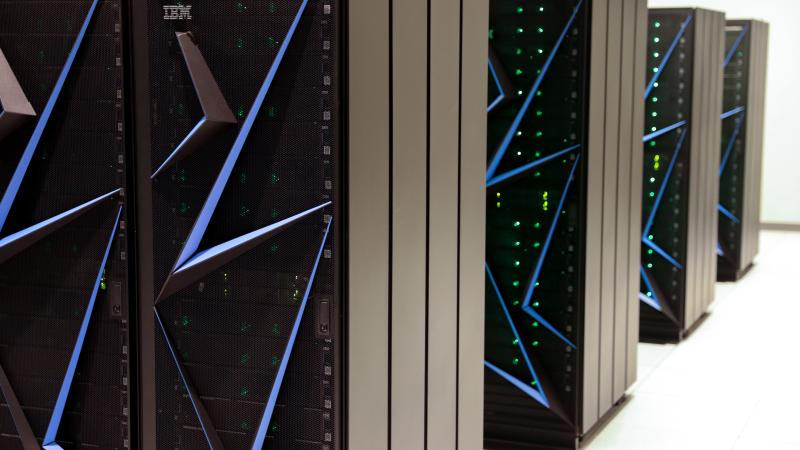Expertise in data, networking, therapeutic innovation, materials, and other areas also made available
March 22, 2020

Rensselaer Polytechnic Institute is enlisting AiMOS, one of the most powerful supercomputers in the world, in the battle against the COVID-19 pandemic. Rensselaer is reaching out to the research community, including government entities, universities, and industry, to offer access to AiMOS in support of research related to the new coronavirus disease.
“In order to combat the devastating effects of this pandemic, we must be able to fully grasp the complexities and interconnectedness of biological systems and epidemiological data, as researchers work to develop therapeutic interventions and address gaps in our knowledge,” said Rensselaer President Shirley Ann Jackson. “This effort requires expertise, collaboration, and the ability to process incredible amounts of data, and Rensselaer is offering all three at this critical time. In particular, the ability to model at very large scales requires the unique capabilities of AiMOS.”
AiMOS, which is short for Artificial Intelligence Multiprocessing Optimized System, is able to perform eight quadrillion calculations per second. AiMOS debuted in the November 2019 Top500 ranking of supercomputers as the 24th most powerful supercomputer in the world and the third-most energy efficient. It also ranked as the most powerful supercomputer housed at a private university.
Located at the Rensselaer Center for Computational Innovations, AiMOS serves as the test bed for the New York State-IBM Research AI Hardware Center, among other things, and is uniquely designed and optimized to help users explore new applications in artificial intelligence.
Rensselaer is making AiMOS available as part of a larger partnership with IBM, academic institutions, and national labs. In addition to the platform, Rensselaer is offering access to the expertise of world-class faculty in data, artificial intelligence, networking, therapeutic interventions, materials, public health, and other areas necessary to understand and address the threat of COVID-19.